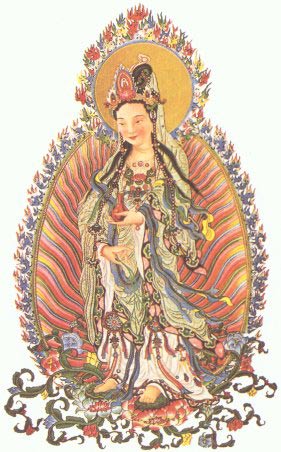
KUAN SHIH YIN P'USA
In the fourth century AD, a monk from Central Asia arrived at
Loyang, then the capital of China, and engaged in widespread
evangelism on this easy and convenient path of salvation which
stirred the interests of many. His work was later continued by
his famous disciple Tao-An (AD 314385) with just as much
vigour who then passed on the responsibility to his own disciple,
a former Taoist, Hui Yuan (AD 334416), who later found the
Pure Land School bet er known then as the Lotus School.
It must be stressed again that rebirth in the Pure Land does
not constitute the attainment of Nirvana, as it is but one of the
countless heavenly realms in the Buddhist Cosmology.
However there is a great difference between the Pure Land of
Amitabha and the various heavenly states in that beings born
there are free from the temptations of sensuous delights and that
they will be blessed with the most excel ent conditions to prac-
tise the Dharma, as have been described earlier, that will lead to
Nirvana.
With the practice of meditation on the evil consequences of
Samsara, one will put more effort in his practice of Nien-Fwo
and appreciate the great opportunity of being a human being
and having found the means of renouncing Samsara.
Pure Land Buddhism also has various meditational practices for
those who are well on the path. Here are the five popular prac-
tices which anyone may practise to achieve rebirth into the Pure
Land:
¡ûBACK¡û |INDEX| ¡úNEXT¡ú